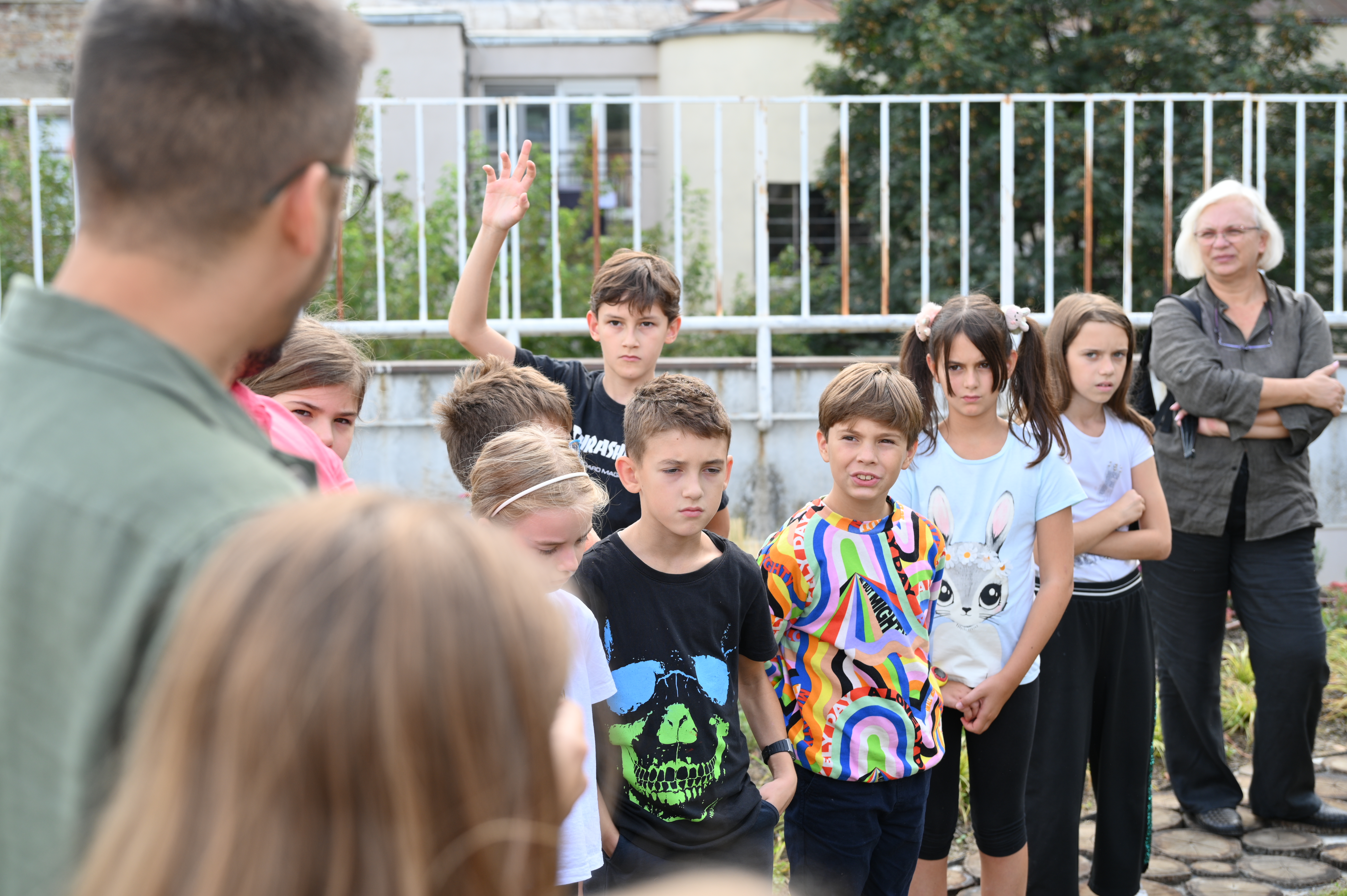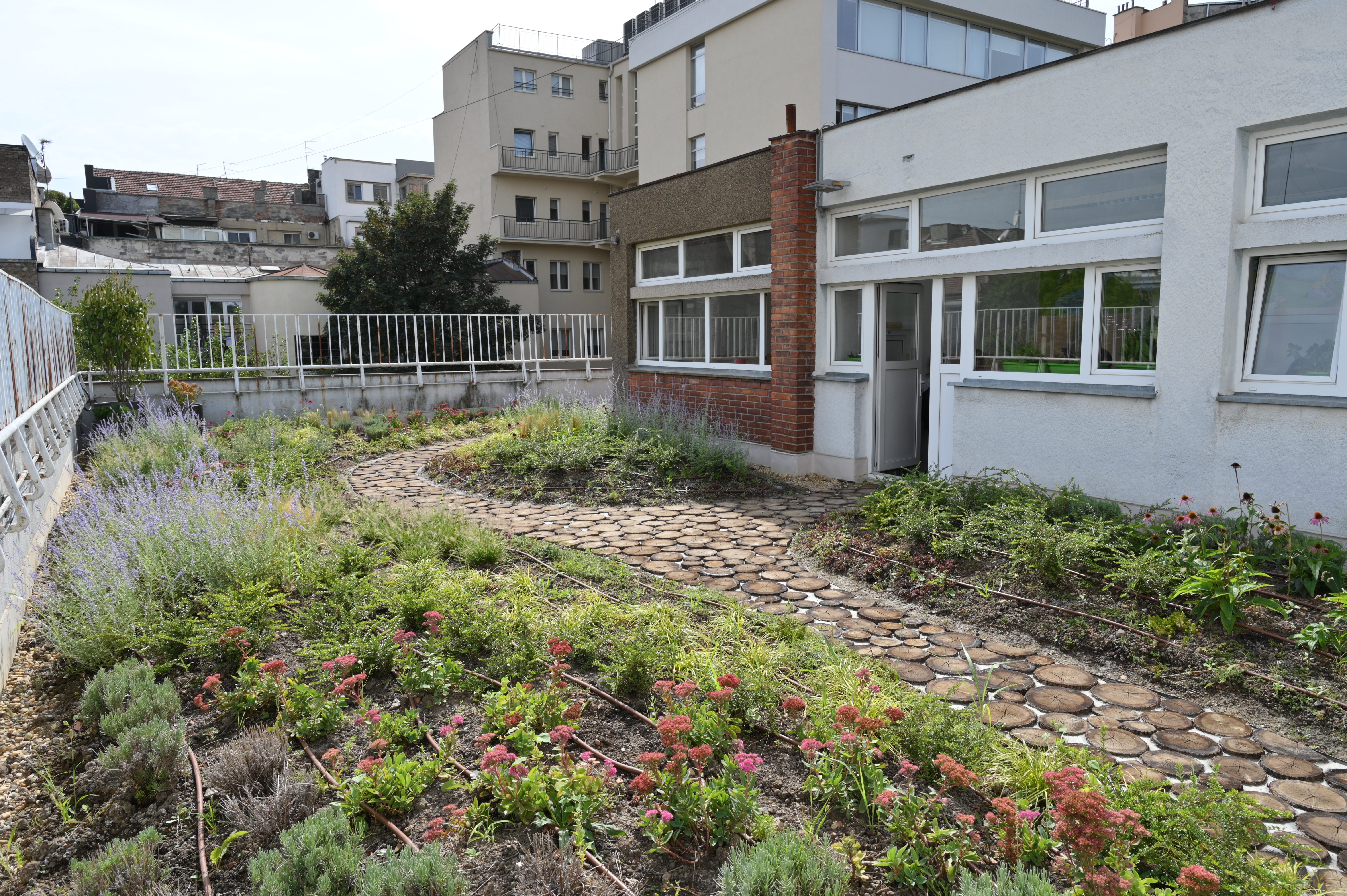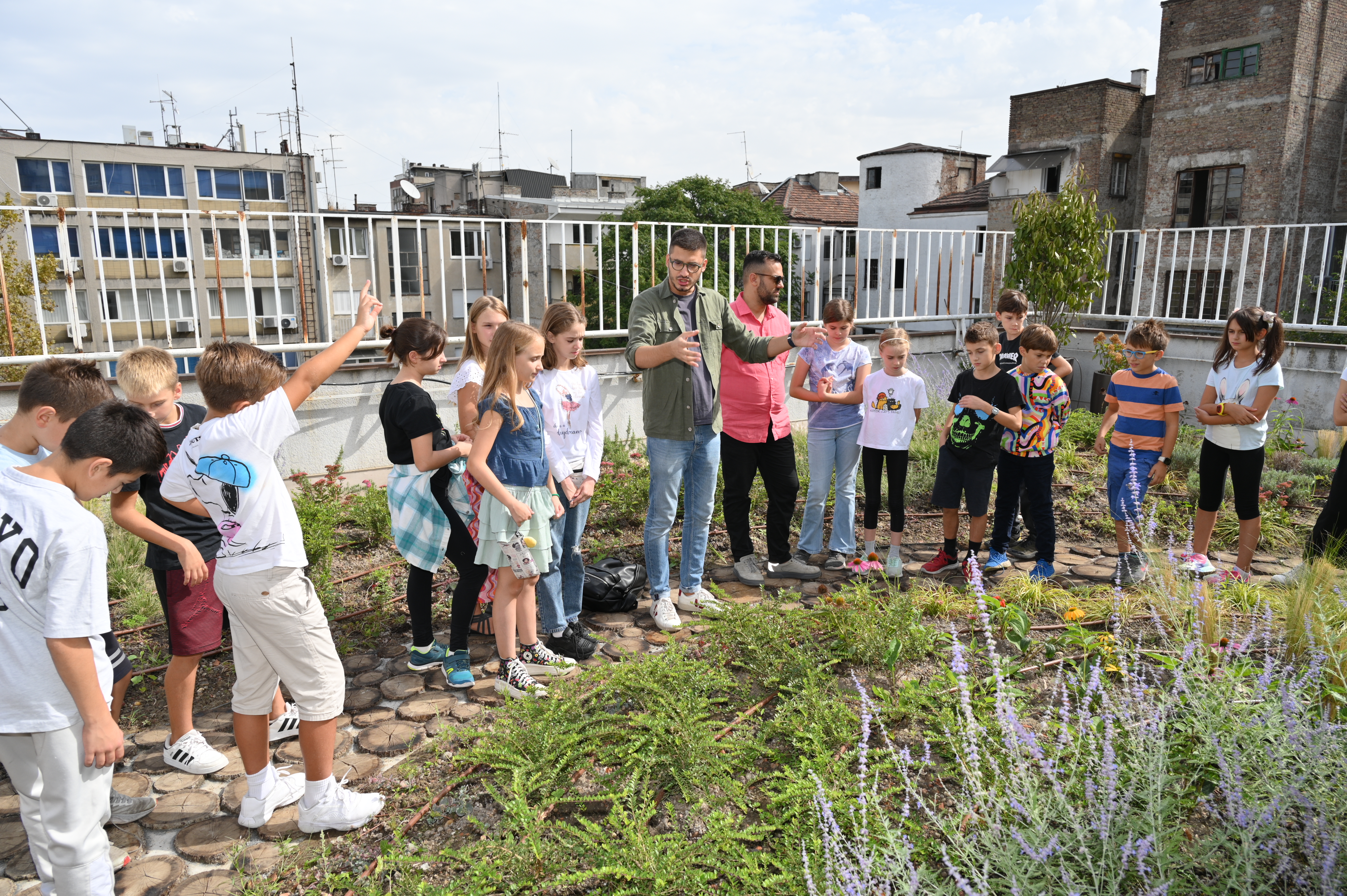How nature became an integral part of an elementary school in Belgrade
Green classroom on the school terrace
October 5, 2023

Starting this school year, classes at the "Drinka Pavlović" Elementary School in Belgrade are being conducted in an innovative environment, on the "green roof", i.e., in a spacious garden that replaced the concrete slabs of the school terrace. The green area of 152m2 combines different species of grass, flowers, medicinal herbs, and trees, and it includes an automatic sprinkler system that waters the plants evenly, spends an optimal amount of water, and takes care of the watering dynamics in line with weather conditions.
Students of IV and V grades at this elementary school learned at an interactive workshop held by professors of the Faculty of Biology at the University of Belgrade about the role of green roofs in solving problems that arise in cities due to climate change.

“The amount of rain that used to fall in Belgrade during a period of two or three months can now fall in the course of just two or three days. Our sewage system cannot take this, and the city does not have enough green areas that could absorb the water, which leads to flooding. Green infrastructure, including green roofs such as this one, retains water, thus preventing torrential floods,” explained Professor Tomica Mišljenović.
In addition to flood protection, this green roof would contribute to better air quality, alleviate high temperatures in the summer, and provide habitat for numerous plant varieties, insects, and birds, thus benefiting the environment and the quality of life in Belgrade.
"In this place, pupils and teachers of this school would learn a lot about preserving the environment and energy efficiency. Also, we from the Faculty of Biology, in our courses such as Urban Ecology, would indicate this roof to our students as an example of green innovation in practice,” said Professor Milorad Vujičić.
Landscaping efforts such as this one also extend the roof’s life since they reduce its exposure to high temperatures and rain, while they also serve as insulation for the building, thus reducing the amount of energy spent on its heating and cooling. This is particularly important for buildings in central city areas, where, due to heavy traffic and a large number of air-conditioning systems, the air temperature is bound to be a couple of degrees higher than in the municipalities outside the city’s core.

After the workshop, regular classes in the “Drinka Pavlović” primary school will also be held on the green roof.
“This space is very important for us since it would provide opportunities for developing the right attitude towards nature and plants among our students. Furthermore, it would significantly enrich practical classes in our school,” believes Acting Director of the school Biljana Popović.
Jelena Hadži Đorđević, a teacher of chemistry, expects that the green roof will enable pupils to encounter plant species that they don’t often see in the centre of Belgrade. “We also plan to do extraction of medicinal herbs and make different preparations in chemistry classes,” added Hadži Đorđević.
The pupils’ impressions have also been positive after their first class held in the green classroom.

"I love nature a lot. I feel better in this garden than in the classroom. I like that we have classes here because I'm somehow more relaxed," says Petar Drobnjakovic, a fourth-grade student.
In addition to the interactive workshop for pupils, the Faculty of Biology experts gave a lecture earlier to the “Drinka Pavlović” primary school employees and acquainted them with all the benefits of green roofs, which would contribute to further raising awareness among the pupils about environmental protection.
The “Drinka Pavlović” primary school has been the first on the territory of Belgrade’s municipality of Stari Grad to receive its green roof, and the plan of this municipality is that other public institutions soon get their own.
The innovation of "Green Roof of My School” was realised by the municipality of Stari Grad within the project titled “Climate Smart Urban Development”, which was implemented by the United Nations Development Programme (UNDP) with the support of the Global Environment Fund (GEF).

 Locations
Locations